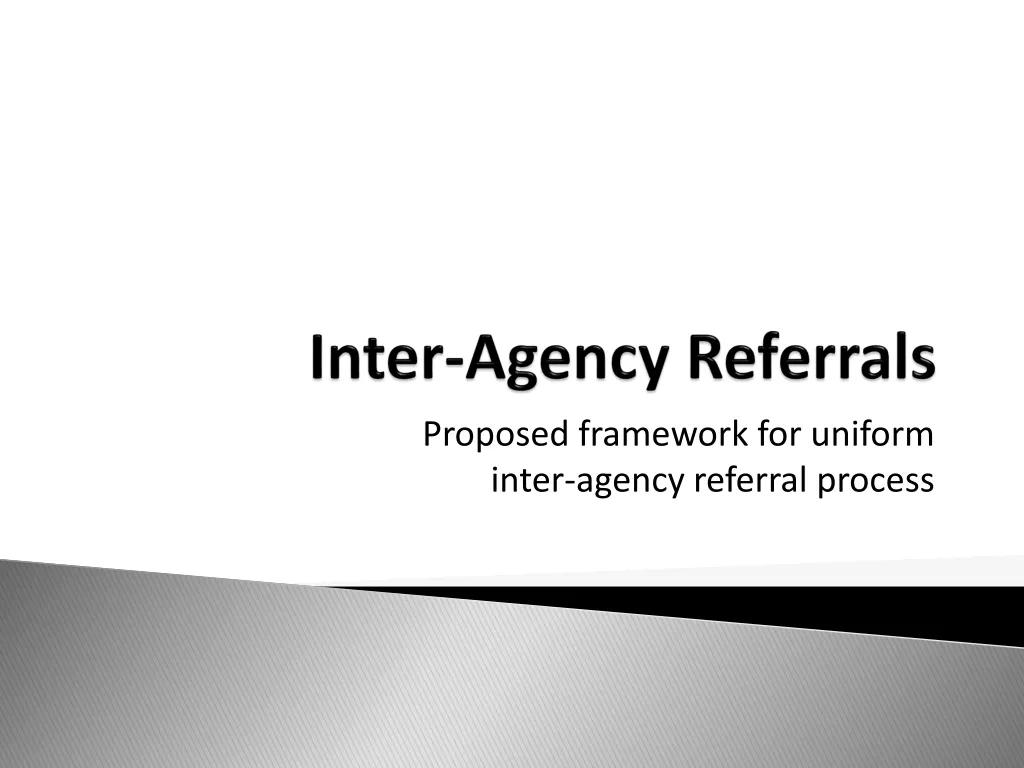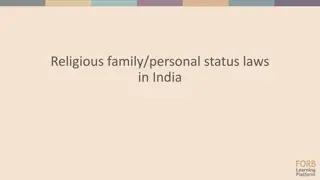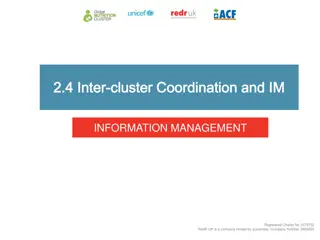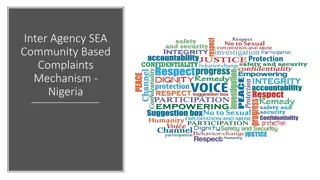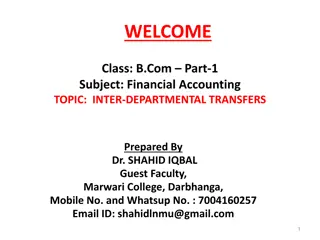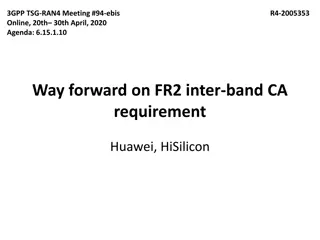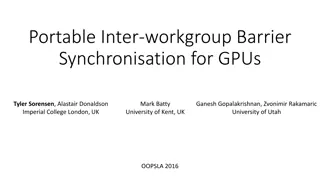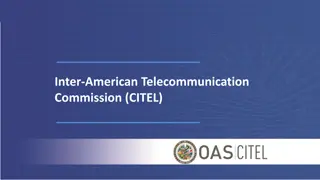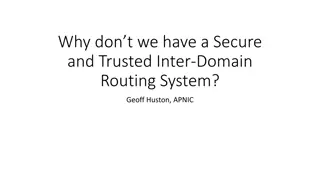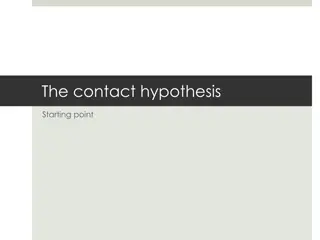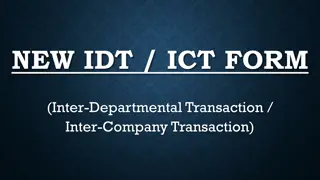
Cost-Effectiveness Analysis of Antihypertensive Drugs Usage by Combination
Study conducted at Gunung Jati Regional General Hospital in Indonesia to analyze the effectiveness and cost efficiency of using a combination of ACEI, CCB, and ARB-CCB for outpatient treatment of hypertension. The research aims to provide insights into managing hypertension as a significant health concern, addressing the potential risks associated with untreated or poorly controlled high blood pressure. Results may contribute to informed decision-making in antihypertensive drug therapy.
Download Presentation

Please find below an Image/Link to download the presentation.
The content on the website is provided AS IS for your information and personal use only. It may not be sold, licensed, or shared on other websites without obtaining consent from the author. If you encounter any issues during the download, it is possible that the publisher has removed the file from their server.
You are allowed to download the files provided on this website for personal or commercial use, subject to the condition that they are used lawfully. All files are the property of their respective owners.
The content on the website is provided AS IS for your information and personal use only. It may not be sold, licensed, or shared on other websites without obtaining consent from the author.
E N D
Presentation Transcript
COST EFFECTIVENESS ANALYSIS OF ANTIHYPERTENSIVE DRUGS USAGE BY COMBINATION OF ACEI CCB AND ARB-CCB IN OUTPATIENT AT GUNUNG JATI REGIONAL GENERAL HOSPITAL CIREBON INDONESIA 2014 1 *1Delina Hasan, 2Aida Maftuhah, 3Wahyudi Uun Hidayat, 4Yardi Saibi PRESENTED AT INTERNATIONAL CONFERENCE ON MEDICINE AND HEALTH SCIENCE OCTOBER 18th-19th2019 AT SEOUL KOREA Delina Hasan@uinjkt.ac.id=Seoul 2019
LATAR BELAKANG Hypertension is a non-communicable disease that needs to be controlled, because this disease can threaten human life, sometimes without symptoms so it was often called the silent killer. 2 Hypertension is characterized by increased systolic blood pressure greater than 140 mmHg and diastolic blood pressure greater than 90 mmHg [1]. Patients with hypertension tend to be at risk for cardiovascular disease, this disease is the main cause of death in Indonesia. The results of basic health research(RISKESDAS) in 2007 showed the prevalence of national hypertension reached 31.7%, in 2013 the figure decreased to 26.5% [2]. Prolonged arterial hypertension can damage blood vessels in the kidneys, the heart and brain, and can increase the incidence of renal failure, coronary heart disease, heart failure and stroke [3]. Delina Hasan@uinjkt.ac.id=Seoul 2019
Handling of hypertension begins with the modification of patterns of life, This is one way to control blood pressure, subsequent handling based on The Seventh of the Joint National Committee (JNC7) On Prevention, Detection, Evaluation, and Treatment of High Blood Pressure with drug therapy antihypertension single or combination of both [5]. 3 The Combined antihypertensive drugs are given if a single antihypertension has not been able to achieve a controlled therapeutic target. The combination often used to control hypertension is ACEI-CCB and ARB-CCB. Effective treatment with minimal costs is the hope of hypertension therapy. To meet this expectation, research on drug effectiveness and cost-effectiveness of oral antihypertensive drug use is needed by conducting pharmacoeconomic analysis. Hypertension needs treatment continuously so that it becomes a burden to the family, the Government and State. During treatment with a single drug has not yet reached the optimum effect, needs to be given a combination of antihypertensive drugs to control blood pressure. Delina Hasan@uinjkt.ac.id=Seoul 2019
Classification Of Hypertension 4 The Joint National Committee on Detection, Evaluation and Treatment of High Blood Pressure (JNC) USA, Classification (JNC VII 2003) [5] Characteristic SISTOLIC (mmHg) DIASTOLIC (mmHg) NORMAL Pre Hypertension Hypertension Stage 1 Stage 2 < 120 120 139 < 80 80 89 140 159 160 90-99 100 Delina Hasan@uinjkt.ac.id=Seoul 2019
5 Objectives This study was to determine the drugs effectiveness, and cost efficienci in the treatment of hypertension patients who use antihypertensive drugs combinations (ACEI-CCB) and (ARB-CCB) at RSUD Gunung Jati Cirebon 2014 Delina Hasan@uinjkt.ac.id=Seoul 2019
Methods, This study was a cohort design to determine the effectiveness of the two groups of antihypertensive drugs and to measure cost efficiency using method the Pharmacoeconomic Cost Effectiveness Analysis. 6 The sample size in this study 66 hypertensive patients were collected from the medical records of hypertensive patients who met the inclusion and exclusion criteria. Then the sample was divided into 2 groups, Group A 33 patients who received ACEI-CCB and Group B 33 patients who received ARB-CCB. Data collection was carried out prospectively for hypertensive patients who are on outpatient treatment and use combination antihypertensive drugs that are same for both groups of patients for three months according to JNC 8. Antihypertensive effectiveness was measured by counting the number of patients whose blood pressure was controlled (<140 / 90mmHg) and <130/80 mmHg in patients with diabetes mellitus. Delina Hasan@uinjkt.ac.id=Seoul 2019
7 Delina Hasan@uinjkt.ac.id=Seoul 2019
RESULTS The characteristics of hypertensive outpatients based on sex, age, education, work, blood pressure, comorbidities, combination ACEI-CCB and ARB-CCB at Gunung Jati Hospital Cirebon Indonesia 2014. From the results of this study about the characteristics showed that the sexes are more female, age ranges from 45-65 years, education at most colleges and universities, the work of civil servants and private employees, systolic blood pressure ranged from 160 - 200 mmHg, diastolic blood pressure ranged between 90-100 mmHg, comorbidities most with type 2 diabetes mellitus, hyperlipidemia, osteoarthritis, followed by dyspepsia and vertigo. 8 the use antihypertensive drugs The relationship between comorbidities with the achievement of clinical outcome (effectiveness) on antihypertensive combination antihypertensive drugs and combination of ARB-CCB drugs in outpatient hypertensive at Gunung Jati Hospital Cirebon Indonesia 2014 showed that hypertensive patients receiving a combination of antihypertensive drugs ACEI-CCB clinical outcome Achieved as much as 97% and for hypertensive patients who received a combination of antihypertensive drugs, the ARB-CCB clinical outcome achieved as much as 69%. therapy with ACEI-CCB Delina Hasan@uinjkt.ac.id=Seoul 2019
9 Table 1. The relationship between the Antihypertensive drugs combination with controlled of blood pressure on treatment hypertensive outpatients at Gunung Jati Regional General Hospital Cirebon Indonesia 2014 Antihypertensive Drug Combination Drug Combination Antihypertensive Blood Pressure Blood Pressure Total Total Controlled N N Controlled Uncontrolled N 18 15 15 Uncontrolled N 18 % 36.36 % 36.36 13.64 13.64 % 27.27 22.73 22.73 % 27.27 N N % % ACEI-CCB ACEI-CCB ARB-CCB ARB-CCB 24 9 9 24 42 24 24 42 63.63 36.37 36.37 63.63 Delina Hasan@uinjkt.ac.id=Seoul 2019
Table 2. The Distribution Of Direct Costs on Hypertensive Outpatients Using Antihypertensive Combination drugs ACEI-CCB and ARB-CCB at Gunung Jati Regional General Hospital Cirebon Indonesia 2014 10 No. The Component Of Direct Cost Cost No. The Component Of Direct Group ADC A (IDR) (IDR) Group ADC A Group ADC B (IDR) Group ADC B (IDR) 1. 1. Cost of antihypertensive combination drugs Cost of Comorbidities drugs Cost of Laboratory Cost of examination Total of direct cost Total of direct cost Cost of antihypertensive combination drugs Cost of Comorbidities drugs Cost of Laboratory Cost of examination 4.620.600.00 4.620.600.00 17.778.480.00 17.778.480.00 2. 3. 4. 4. 2. 3. 2.819.641.25 2.475.000.00 1.650.000.00 11.565.241.25 11.565.241.25 2.819.641.25 2.475.000.00 1.650.000.00 4.267.772.50 2.265.000.00 1.650.000.00 25.961.252.50 25.961.252.50 4.267.772.50 2.265.000.00 1.650.000.00 Note: ACD A= Antihypertensive combination drugs ACEI-CCB ACD B= Antihypertensive combination drugs ARB-CCB Delina Hasan@uinjkt.ac.id=Seoul 2019
Table 3. The Distribution Of Indirect Costs on Hypertensive Outpatients Using Antihypertensive Combination drugs ACEI-CCB and ARB-CCB at Gunung Jati Regional general Hospital Cirebon Indonesia 2014 11 No. The Component Of Indirect Cos Group ADC A (IDR) Group ADC B (IDR) 1. 2. 3. 4. Cost of transportation Cost of accommodation Cost of loss of productive time Total of Indirect cost 558.000.00 990.000.00 1.941.952.00 3.489.952.00 572.100.00 990.100.00 1.388.704.00 2.950.704.00 Note: ACD A= Antihypertensive combination drugs ACEI-CCB ACD B= Antihypertensive combination drugs ARB-CCB Delina Hasan@uinjkt.ac.id=Seoul 2019
Table 4. The distribution costs on hypertensive outpatients using antihypertensive drugs combination ACEI-CCB and ARB-CCB at Gunung Jati Regional General Hospital Cirebon Indonesia 2014 12 Antihyper tensive Direct Cost (IDR) Indirect Cost (IDR) Total Cost Patients with Controlled BP 24 Unit Cost ACEI-CCB 11.565.241.25 3.489.952.00 15.055.193.25 627.299.72 ARB-CCB 25.961.252.50 2.950.740.00 28.911.965.50 18 1.606.219.81 ACEI-CCB combination was 72.7% in the controlled blood pressure while the ARB-CCB in the controlled blood pressure was 61.8%. It showed that the ACEI-CCB was more effective than the ARB-CCB. ACEI-CCB Unit Cost was IDR 627,299.72 (ACER), while ARB- CCB unit cost was IDR 1,606,219.81. This means that the antihypertensive combination of ACEI-CCB unit cost was lower than the ARB-CCB or called efficiency. Delina Hasan@uinjkt.ac.id=Seoul 2019
13 Acer for ACEI-CCB = IDR 627,299 ACER for ARB-CCB = IDR 1.606.219 Cost ACEI-CCB Cost ARB-CCB ICER = ------------------------------------------------ Effect ACEI-CCB Effect ARB-CCB ICER = - 1.524.397 does it mean when we use ACEI-CCB antihypertensive drug combination of lower costs amounted to - 1.524.397 Delina Hasan@uinjkt.ac.id=Seoul 2019
Sensitivity Analysis 14 sensitivity analysis is carried out if the two antihypertensive drugs in combination are still in doubt which can be suggested to be the drug of choice in the treatment of hypertension. then the simulation is carried out, if the total cost of the ARB-CCB combination drug is used to fund the ACEI- CCB, how many patients can be controlled for blood pressure. If the result is greater than 1, the ACEI-CCB combination drug is recommended to be used as the preferred antihypertensive drug. The total cost of the ARB-CCB is divided by the unit cost of ACEI-CCB. 28911965/627299 = 47,606 meaning this is greater than the clinic outcome produced by ACEI-CCB (24), this indicates> 1 (47/24). Delina Hasan@uinjkt.ac.id=Seoul 2019
CONCLUSION 15 ACEI-CCB combination was 72.7% in the controlled blood pressure while the ARB-CCB in the controlled blood pressure was 61.8%. It showed that the ACEI-CCB was more effective than the ARB-CCB. ACEI-CCB Unit Cost (ACER) was IDR 627,299.72, while ARB-CCB unit cost (ACER) was IDR 1,606,219.81. This means that the antihypertensive combination of ACEI-CCB unit cost (ACER) was lower than the ARB-CCB or called efficiency. ICER = - 1.524.397 does it mean when we use ACEI-CCB antihypertensive drug combination of lower costs amounted to - 1.524.397 the results of the sensitivity analysis showed that the combination of ACEI- CCB advised can be the drug of choice for the treatment of hypertension Delina Hasan@uinjkt.ac.id=Seoul 2019
16 THANK YOU Delina Hasan@uinjkt.ac.id=Seoul 2019


